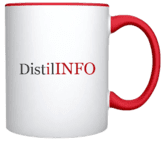
Patient Retention Challenges in Modern Healthcare
Health systems today face unprecedented challenges in retaining patients who have numerous care options available both in-person and virtually. As healthcare consumers become more selective, hospitals must deliver exceptional care while managing limited inpatient capacity and addressing clinical staff burnout.
Remote cardiac monitoring has emerged as a powerful solution that enables healthcare providers to maintain patient relationships while optimizing hospital resources. By leveraging cardiac data collected through ambulatory care devices, health systems can effectively care for patients within their network without necessarily requiring hospital admission.
Philips, a leader in healthcare technology, offers valuable insights on how facilities can utilize this cardiac data to maximize existing capacity and strengthen patient retention. Julia Strandberg, Chief Business Leader for Connected Care at Philips, recently shared her expertise on these critical industry challenges.
The Nonnegotiable Nature of Quality Patient Care
“Impactful patient care, in and out of the hospital, is a nonnegotiable – it’s what patients require and desire,” explains Strandberg. Today’s healthcare consumers expect high-quality, efficient care during hospitalization and want to remain actively engaged in their treatment journey once discharged.
However, persistent clinical staffing shortages and fragmented hospital data systems create significant barriers to meeting these expectations. Longer wait times and delayed care have become unfortunately common, frustrating both patients and providers.
Data Fragmentation: A Critical Barrier to Efficient Care
As patient volumes increase and cases grow more complex, siloed healthcare data presents a formidable challenge. Without a comprehensive view of patient health information, clinicians face unnecessary obstacles in diagnosis and treatment planning.
This fragmentation often leads to redundant testing and specialty referrals that increase patient stress, care costs, and overall dissatisfaction. It also diverts valuable resources from patients who genuinely require specialized attention.
Healthcare organizations must prioritize system-wide interoperability across all devices and platforms regardless of vendor. Seamless data access enables clinicians to quickly review comprehensive patient information, facilitating faster, more accurate diagnoses and treatment decisions.
Capacity Constraints in Modern Healthcare Systems
Healthcare facilities nationwide continue grappling with overwhelming patient volumes amid persistent staffing shortages. These challenges will intensify as the population ages and patient conditions become increasingly complex and acute, negatively impacting both patient outcomes and staff wellbeing.
A growing concern for healthcare professionals is data overload. Nearly 40% of healthcare leaders report that staff waste precious time consolidating patient data from multiple sources, reducing time available for direct patient care. Administrative tasks like scheduling and reporting further consume nursing time, with professionals spending 15-20 minutes per hour on such activities.
Open, interoperable systems are essential to eliminate these barriers and transform vast clinical data pools into actionable insights. Industry leaders like Philips are collaborating with healthcare providers and ecosystem partners to develop integrated systems that enhance care pathways and streamline operational workflows while reducing costs and staff burden.
Remote Cardiac Monitoring: A Game-Changing Solution
Remote patient monitoring technologies combined with advanced analytics offer powerful tools for addressing capacity challenges. Consider a patient arriving at the emergency department following a fainting episode (syncope). Instead of hospital admission for observation, a mobile cardiac telemetry device allows the patient to return home while their cardiac rhythms are continuously monitored.
“This model reduces overcrowding by removing unnecessary admissions, allowing staff to focus more on acute cases,” notes Strandberg. “And the patient avoids a hospital stay and can recover comfortably at home.”
The patient’s real-time data is shared across the care team, ensuring the cardiologist has comprehensive information available before the follow-up appointment. This approach accelerates diagnosis and subsequent treatment planning while maintaining the patient within the health system’s care network.
Driving Wider Adoption of Remote Monitoring Technologies
Expanding the implementation of remote patient monitoring technologies requires an industry-wide paradigm shift. Healthcare leaders must recognize how rapidly care delivery models are evolving beyond traditional hospital settings and embrace the potential of this transformation.
Home-based care technology continues to advance, demonstrating improved patient outcomes, reduced acute care lengths of stay, and decreased strain on healthcare facilities. By leveraging these innovations, health systems can maintain patient relationships while creating capacity for those requiring in-hospital care.
Healthcare organizations must partner with technology vendors prioritizing interoperability to give clinicians access to high-quality, real-time patient information. This foundation not only creates clinical efficiencies but also enables AI implementation to support more timely, informed decision-making across the care continuum.
The result? Improved patient outcomes, substantial cost savings, and optimized resource management that benefit the entire healthcare ecosystem.
Discover the latest Provider news updates with a single click. Follow DistilINFO HospitalIT and stay ahead with updates. Join our community today!




Leave a Reply